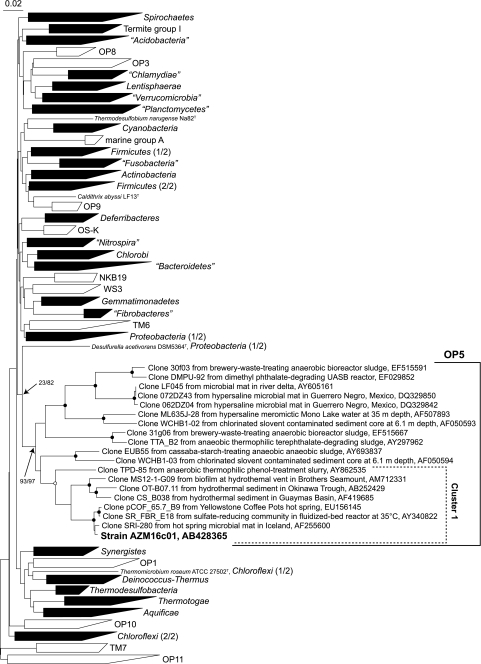FIG. 3.
An NJ tree based on the 16S rRNA gene sequences of strain AZM16c01, environmental clones of the OP5 phylum, and recognized bacterial lineages (a slightly updated bacterial data set described by Hugenholtz [10] was used as the main reference sequences). After alignment was performed with the ARB program, 1,315 positions were used for analyses. The shaded wedges indicate phyla with cultivated representatives, and the unshaded wedges indicate phyla currently represented only by environmental sequences. The numbers in parentheses indicate phyla that are divided into separated clusters. Bootstrap values are indicated at the corresponding nodes (NJ tree/ML tree). The probability scores at branching points in the OP5 phylum obtained with four analysis methods (NJ, ML, MP, and Bayesian) using three phyla (OP5, Proteobacteria, and Chloroflexi) are indicated by solid circles (above 95% by all the phylogenetic analysis methods) and open circles (>85% bootstrap probability supported by two analyses). Bar, 0.02 changes per sequence position.

